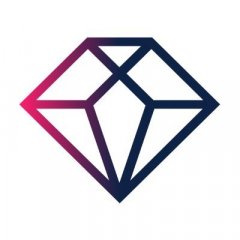Like Schrodinger’s cat to physicists, Gen Z’s pose a new and somewhat allusive challenge for marketers. Yes, go to Facebook and you’ll find Millennials and Boomers. But try to find Zoomers and it’s a different tune. Or is it?
Being laser-focused on your demographic was always important but it matters much more today. The truth is, organic measures alone are no longer sufficient for mobile growth. With over 5.7 million apps live on the app stores today, competition is steep. To maximize user growth, you need to prioritize high value partnerships tailored to your demographic base or otherwise your marketing budget will dissolve. But how do you pick the right partner to grow your target user base? Start with demographic mobile usage and affinity habits tailored by region. You’ll uncover powerful insights into Gen Z, Millennial, Gen X, and Baby Boomer’s favorite apps and their nuanced engagement patterns unique to each country.
What’s Happening:
According to the Pew Research Center Gen Z is the only generation to have self-reported a decline in social media use in recent years. However, there is a difference in how much we think we use social media, and our actual usage patterns.

data.ai’s data shows that Gen Z users in 5 major markets engage more on social than any other age group, among the top 10 social apps by MAU. Gen Z accesses social apps between 12% more than Millennials in South Korea, to 19% more in the US and up to 30% more in Germany. Gen Z users in the UK take the cake, amassing an average of 293 social media sessions per user in June 2022, compared to 262 sessions in the US.
But here is something quite surprising: data.ai’s demographic data exposes frequent social usage among Gen X in Germany and the US, almost to the level of Gen Z. This challenges assumptions and illustrates the power of strategic social partnerships to tap into an engaged Gen X market.
Why It Matters:
Social habits vary dramatically by country — highlighting the need for diverse and country-specific partnership strategies fueled by data.
Frequency of use tells only part of the picture. Average time per user illustrates depth of engagement. While Gen Z engages in their favorite social apps more frequently in the 5 markets analyzed, this isn’t always true for depth of time spent. In fact, in both Germany and the US, the average Gen Xer spent 25% more time on social apps than Gen Z.
It is also notable that Baby Boomers in the US bucked trends seen in other markets. They spent on average 10.7 hours per month in each social app, 43% more than the next highest market: 7.5 hours in the UK.

Knowing how and where Gen Z consumers are spending their time provides brands and app publishers with helpful insights into how to best advertise to and engage with this demographic via strategic partners.The same goes for other demographics: knowing who is spending the most time on an app enables publishers to better engage those users and proactively target others. Baby Boomers and Gen X control nearly 70% of household wealth in the US in 2022, amounting to over $63 trillion. These generations offer ample opportunity for mobile engagement: high spending power and greater disposable time (if retired).
Go Deeper:
But which apps specifically offer the most potential for partnerships? Identifying the right partner for each target cohort is more than identifying the largest audience. If you are trying to grow your Gen Z user base, for instance, you would need to focus both on apps which have the largest Gen Z audiences and the greatest likelihood of use by the target demographic.
Surely, TikTok has the biggest Gen Z user base in the US, right? Actually, wrong. The #1 social app in the US by Gen Z monthly active user base is actually Facebook. TikTok only comes in 4th. That being said, this is only half of the picture. Many businesses would stop here. But data.ai’s mobile data reveals a deeper story. Instagram, TikTok, Snapchat, Twitch, BeReal and Reddit are actually more likely to be used by Gen Z than the overall population in the US. Gen Z ‘over-indexes’ in these apps — meaning targeting these apps could provide a better, more engaged user base of Gen Zers. Layering audience size and likelihood of use gives you powerful direction for shortlisting high-value potential partners to reach your target audience.

Ultimately, uncovering generational differences is critical to finding your target audience and best-positioned partners for growth.

















